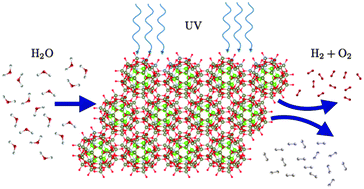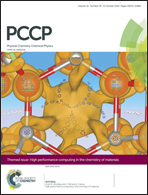Double bubbles: a new structural motif for enhanced electron–hole separation in solids
Abstract
Electron–hole separation for novel composite systems comprised of secondary building units formed from different compounds is investigated with the aim of finding suitable materials for photocatalysis. Pure and mixed SOD and LTA superlattices of (ZnO)12 and (GaN)12, single-shell bubbles are constructed as well as core@shell single component frameworks composed of larger (ZnO)48 and (GaN)48 bubbles with each containing one smaller bubble. Enthalpies of formation for all systems are comparable with fullerenes. Hole and electron separation is achieved most efficiently by the edge sharing framework composed of (GaN)12@(ZnO)48 double bubbles, with the hole localised on the nitrogen within the smaller bubbles and the excited electron on zinc within the larger cages.

- This article is part of the themed collection: High performance computing in the chemistry of materials

 Please wait while we load your content...
Please wait while we load your content...